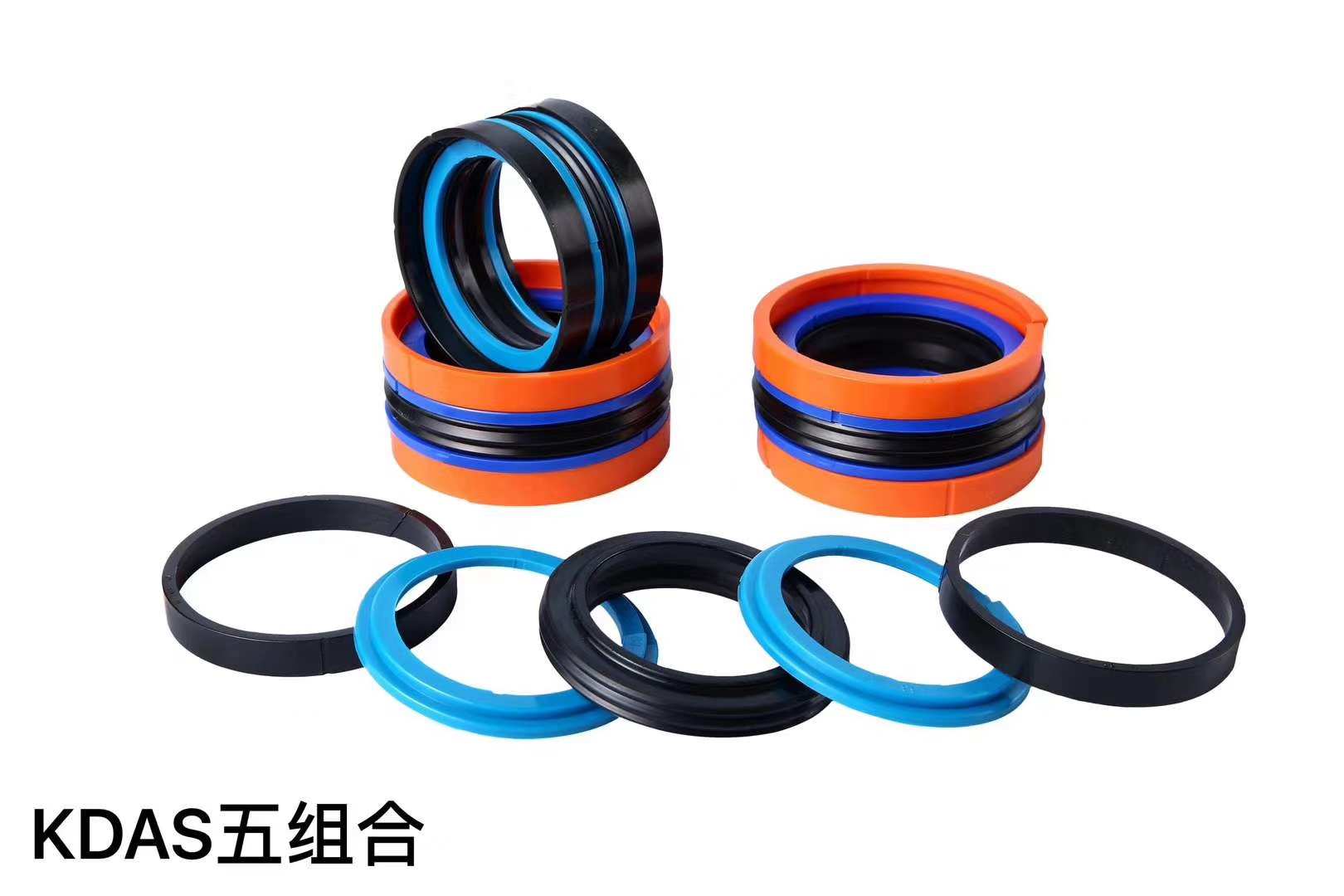1. Working principle of oil seal
1) In the free state, the inner diameter of the oil seal lip is smaller than that of the journal and has a certain amount of interference;
2) After installation, the interference pressure of the oil seal blade and the contraction force of the self tightening spring shall produce a certain radial pressure on the rotating shaft;
3) During operation, the oil seal lip forms a 0.25 ~ 0.5mm wide sealing contact ring under the action of radial pressure. Under the action of lubricating oil pressure, the oil seeps into the oil seal edge and forms an extremely thin oil film with the rotating shaft. The oil film forms a "Crescent" surface on the outer edge of the rotating shaft and the oil seal edge under the action of oil surface tension to prevent oil overflow and play a sealing role.
2. Main factors causing oil seal leakage
Lax sealing of oil seal is the main factor causing leakage. When the shaft is worn to form a groove, even if a new oil seal is replaced, it still cannot be sealed because the contact pressure between the oil seal lip and the shaft decreases, resulting in too small interference between the diameter of the oil seal lip and the journal after installation.
3. Countermeasures for leakage caused by loose oil seal
1) Master and identify the basic knowledge of fake and shoddy products, and buy high-quality and standard oil seals.
2) Before installation, if the outer surface of the journal has low roughness or rust spots, rust, burrs and other defects, it shall be polished smooth with fine abrasive cloth or oilstone; Apply clean engine oil or lubricating grease to the corresponding position of the oil seal lip or journal. The outer ring of the oil seal shall be coated with sealant, and the keyway on the shaft shall be wrapped with hard paper to avoid scratching the lip of the oil seal. Use special tools to rotate and press the oil seal inward. Do not hit the hard punch hard to prevent the oil seal from deforming or breaking the spring; In case of lip flanging, spring falling off and oil seal deflection, it must be removed and reinstalled. It should be noted that when the journal is not worn and the spring force of the oil seal is sufficient, do not tighten the inner spring without authorization.
3) The oil seal applied to machinery generally has poor working conditions, large environmental temperature difference, much dust, frequent machine vibration, and constantly changes the stress status of parts, so it is necessary to check, maintain and maintain frequently.
4) In case of serious wear of journal and bearing, aging of oil seal rubber or failure of spring, repair and replace corresponding parts in time.
5) For abnormal heating parts or assemblies, the fault shall be removed in time to avoid mechanical overspeed and overload operation, so as to prevent the temperature rise of oil seal lip and early wear of rubber aging lip.
6) Check the oil level frequently. If there are too many impurities in the oil and there are alloy powder and metal iron filings, completely replace the new oil. The brand and quality of the changed oil shall meet the requirements of the season.
7) The temporarily unused oil seal shall be properly kept to prevent oil stain, dust or sun exposure.
8) When the journal is worn into a "V" groove, which reduces the contact pressure between the new oil seal lip and the shaft and cannot seal the oil, AR-5 two-component adhesive can be used for bonding, which is simple, reliable and wear-resistant, or the method of oil seal displacement can be used for compensation.




 service
service